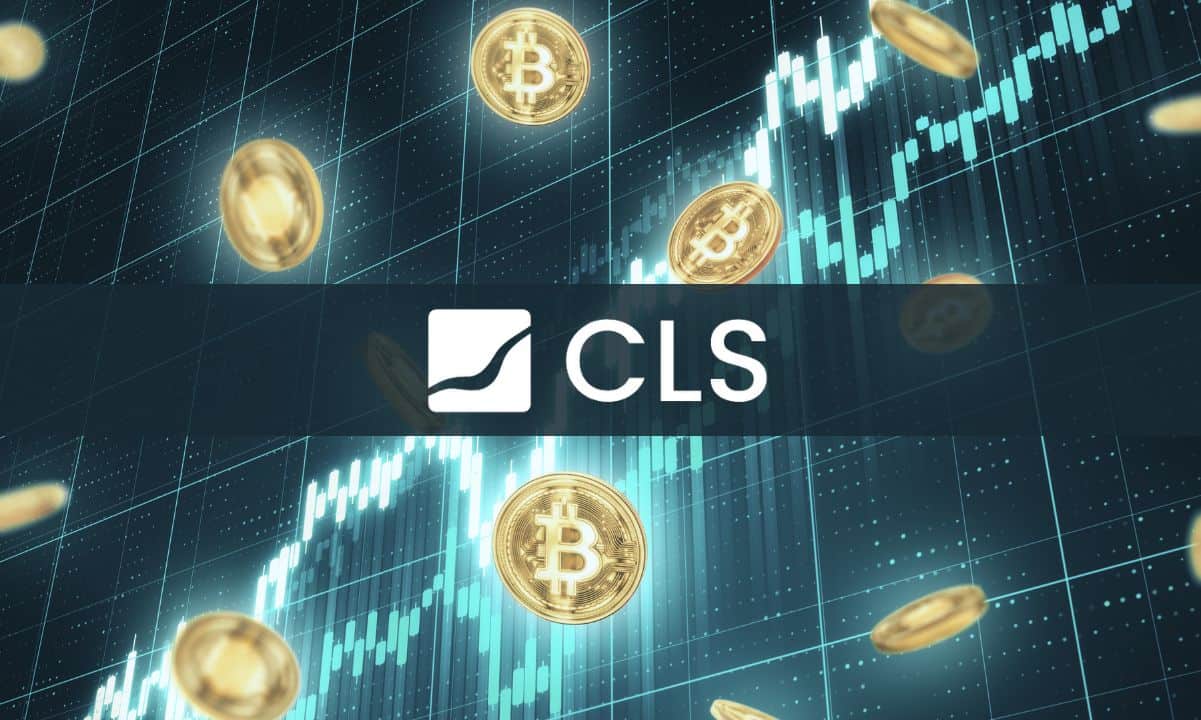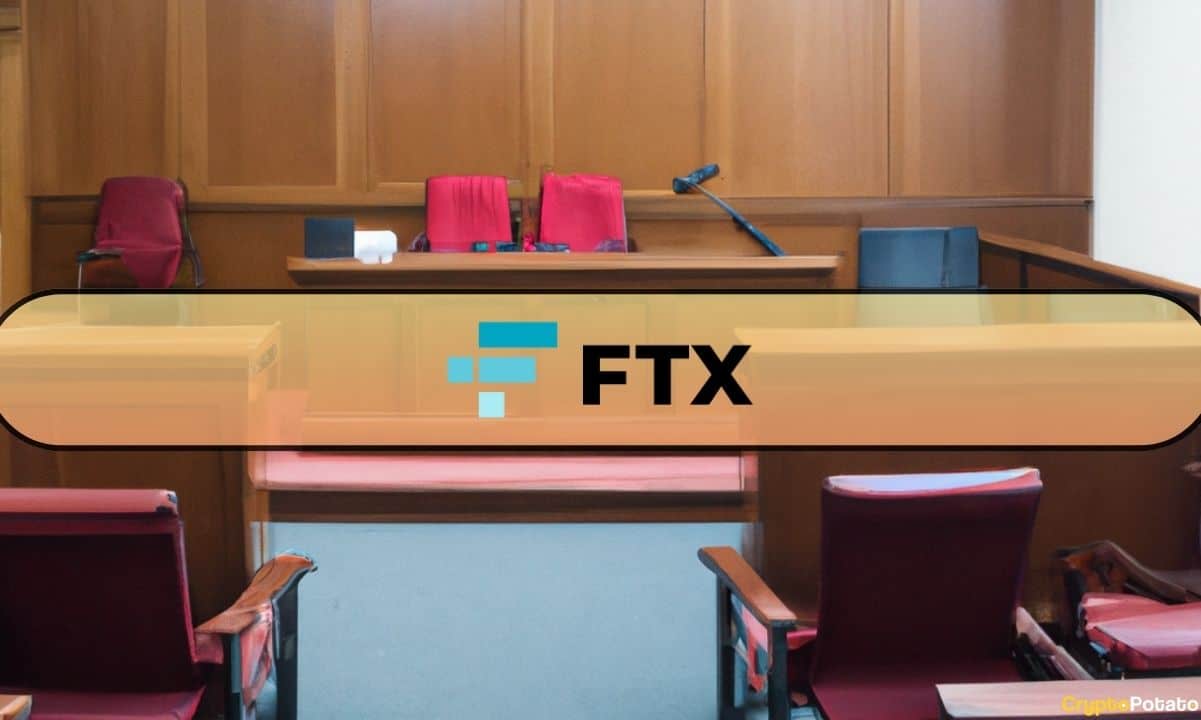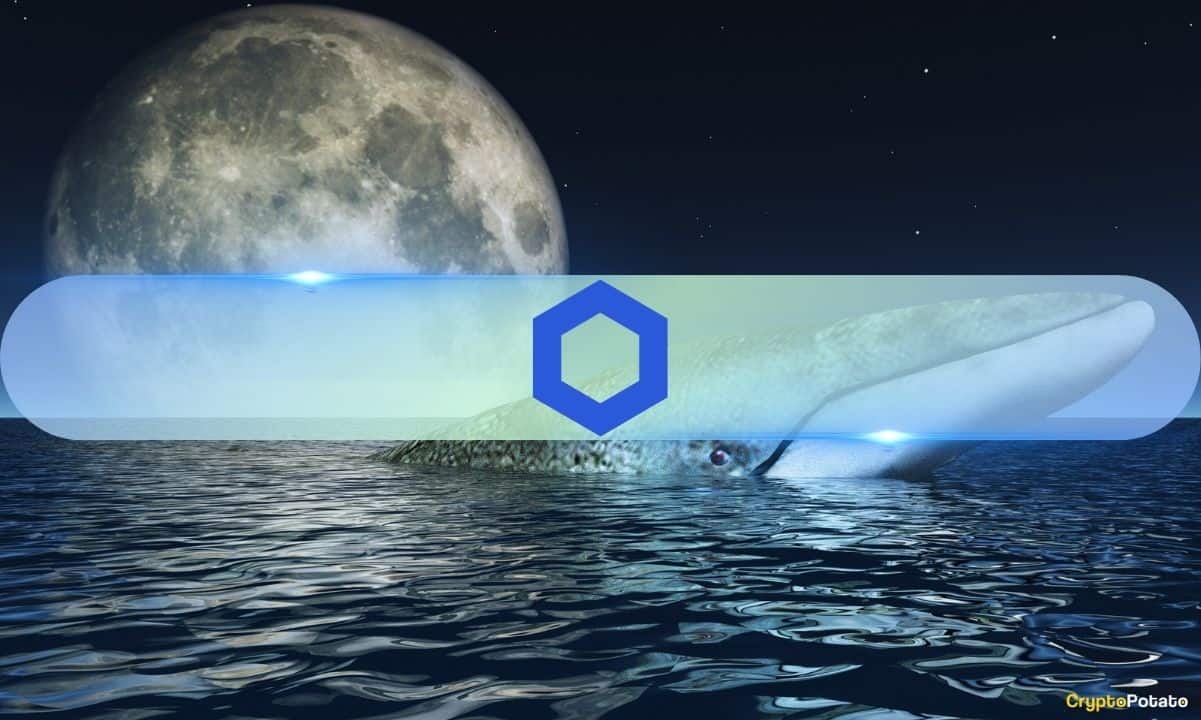Cryptocurrency
CLS Global: Enabling DeFi and DePIN Adoption in the Web2 Ecosystem

Over the years, blockchain technology has evolved from simply facilitating peer-to-peer money transfer to sophisticated functions such as decentralized finance (DeFi) and decentralized physical infrastructure network (DePIN).
DeFi comprises products that decentralize the traditional financial system, while DePIN enables the decentralization of physical infrastructure and other real-world products, blending the Web2 and Web3 ecosystems. Together, both innovations aim to bring everyone more organized structures and products.
This article delves into the intricacies of DeFi and DePIN for Web2 companies. It highlights the pivotal role CLS Global, a renowned crypto trading services provider, plays in supporting these initiatives.
DeFi and DePin: Drivers of Bringing More Organized Structures and Products
DeFi is an umbrella term that blends “decentralization” and “finance.” The idea behind the concept is to integrate services offered in the traditional financial sector into the blockchain ecosystem. Imagine applying for a loan on the blockchain or depositing your crypto holdings into a pool of funds for passive income. That’s precisely what DeFi brings to the table.
Banks or other centralized financial institutions operate as intermediaries between investors and the desired financial product in the traditional financial system. Underpinned by blockchain technology, DeFi projects change the narrative by allowing users to execute transactions by interacting with self-executing computer programs called smart contracts. The mechanics of the DeFi ecosystem give investors complete control of their funds.
The DeFi sector offers multiple products. These include borrowing and lending services, earning returns through yield farming, staking tokens to strengthen blockchain security, and more.
Decentralized Physical Infrastructure Network (DePIN), on the other hand, is an innovation that blends blockchain functionality into physical hardware, such as servers or networks. Instead of relying on a single entity, a network of participants helps to build, maintain, and run the infrastructure, making it more accessible, transparent, and distributed.
Essentially, DePIN enables physical infrastructures like real estate, solar panels and batteries for energy systems, hotspots and routers for wireless networks, or servers for cloud computing to be tokenized on the blockchain. Additionally, DePINs can operate as DeFi projects, allowing users to trade, borrow, lend, and stake tokens.
Based on their broad functionalities, DeFi and DePIN can potentially improve the global financial system, making financial services more accessible, reducing costs, and eliminating intermediaries. These innovations also enhance transparency and security, which are uncommon in today’s traditional financial system. Blockchain’s transparent record of transactions helps reduce fraud and build trust, while its decentralization makes systems less vulnerable to security attacks.
DeFi and DePIN offer users complete control and flexibility over their assets and transactions without relying on central authorities. They also foster innovation by supporting various financial activities and applications, leading to a more efficient economic system.
Benefits of DeFi and DePIN
Accessibility: They provide financial services to people who may not have access to traditional financial institutions due to geographical or regulatory limitations.
Lower Costs: Operational fees for blockchain-based projects are drastically reduced as intermediaries and central authorities are removed.
Increased Transparency: Although financial institutions may offer some transparency, blockchain technology ensures extensive transparency and verifiable transactions.
Enhanced Security: Decentralization offers better protection against hacks as there is no single point of failure.
Complete Control of Assets: Unlike financial companies that manage users’ money, DeFi and DePIN projects allow users to manage their assets completely.
Challenges of DeFi and DePIN
Regulatory Hurdles: As regulatory bodies globally are still figuring out how to regulate these new technologies, there exists a constant shift in rules and guidelines. This uncertainty can create challenges for users and developers as they struggle to comply with evolving crypto laws and regulations.
Technical Complexity: The technology can be complicated for users to understand and use. Overcoming the hurdle lies in each user’s effort to study and understand the blockchain realm.
Scalability Issues: Handling large transaction volumes can be challenging depending on the underlying blockchain network. Still, some blockchains have overcome this challenge through the proof of stake (PoS) consensus mechanism and other similar innovations.
Risk of total loss of funds: The decentralized nature of the blockchain makes it nearly impossible for investors to recover funds sent to the wrong wallet addresses. The same challenge applies when users prey to cyber exploits like phishing attacks.
Merging DeFi and DePin with Web2 Companies
Today, centralized entities own and operate the most prominent companies and projects. It means users rely on a single authority and remain vulnerable to a single point of failure. However, DeFi and DePIN sought to change the narrative. Both innovations aim to revolutionize how Web2 companies operate through their diverse functionalities. Here’s how.
As previously highlighted, DeFi brings decentralization into traditional finance (TradFi). It is possible to merge DeFi with Web2 companies, especially those specializing in TradFi, such as banks, hedge fund managers, brokerages, etc. Such a merger will allow customers of these Web2 firms to access DeFi functions like decentralized lending, borrowing, staking, and farming. Unlike most TradFi companies that impose high transaction fees, DeFi comes with minimal network fees, depending on the underlying network used.
Merging DePIN with Web2 companies can potentially profit users and any firm involved. DePIN inherently puts control of physical infrastructures in investors’ hands, giving them governance rights over the product(s) and bolstering transparency. Users are also rewarded with tokens for participating in DePIN projects, incentivizing more to join the ecosystem.
When traditional Web2 companies, like Tesla, Airbnb, and others, incorporate DePIN into their products, they automatically welcome millions of DeFi users into their ecosystem, potentially growing their user base and revenue stream.
Interestingly, adopting DeFi and DePIN into the traditional Web2 ecosystem can increase the number of crypto users and bring more profits to businesses that explore the idea. Let’s take a case study. In January 2024, the multinational asset manager BlackRock joined various financial companies that launched a spot Bitcoin exchange-traded fund (ETF), an investment vehicle that blends the traditional financial system with the leading cryptocurrency.
Following its listing in the United States financial market, BlackRock’s Bitcoin ETF saw massive inflows, skyrocketing the company’s assets under management (AUM) to $10.6 trillion. BlackRock’s stock also saw price increases.
BlackRock’s performance with the spot Bitcoin ETF shows that much good comes from tapping into blockchain technology. If Web2 companies adopt DeFi and DePIN into their ecosystem, the crypto and traditional financial markets will harmoniously grow due to increasing demand. At the same time, more investors unfamiliar with blockchain will be enlightened on how the technology works, leading to mainstream adoption.
CLS Global: The Missing Piece
Founded in 2017, Coin Liquidity Solutions (CLS) Global is a digital asset service provider specializing in market-making expertise and consultancy. Its CEO, Filipp Veselov, currently leads the company. The Dubai-based platform manages over $1.5 billion in assets to ensure project growth and market success.
CLS Global’s market-making entails the platform’s team guiding clients (crypto projects) to embrace advanced strategies to help them thrive in the crypto market. Its consultancy feature encompasses offering comprehensive knowledge to projects, giving them a hedge in the competitive digital asset industry.
Additionally, the firm funds new crypto projects through its venture arm, helping to fast-track the projects’ growth in the industry. CLS Global also helps its clients through all stages of development: idea stage, pre-launch, launch stage, and post-launch.
The platform boasts its services as an all-in-one package because its clients receive any or all of these services to push the clients to new frontiers. CLS Global’s website shows 500+ active clients and over a million attracted holders. It has also integrated with over 100 exchanges across the crypto industry. At press time, 10% of the top 200 projects within CLS Global’s ecosystem have secured listing on the price-tracking platform CoinMarketCap.
CLS Global positions itself as a top choice for those seeking to blend DeFi or DePIN with Web2 companies. The project has nearly a decade of experience in the digital asset industry, having weathered three bearish cycles and existed when both innovations launched in the crypto market. Additionally, decentralized projects are among CLS Global’s partners, showing its established history with the DeFi terrain.
Conclusion
CLS Global supports the integration of DeFi and DePIN into the Web2 ecosystem by offering market-making and consultancy services. With its expertise and support, businesses can enjoy enhanced transparency, security, and efficiency, driving innovation and growth in the digital asset industry.
Binance Free $600 (CryptoPotato Exclusive): Use this link to register a new account and receive $600 exclusive welcome offer on Binance (full details).
LIMITED OFFER 2024 at BYDFi Exchange: Up to $2,888 welcome reward, use this link to register and open a 100 USDT-M position for free!
Cryptocurrency
FTX Wants to Block Claims from 49 Countries, Including China: Users Rage

Bankrupt crypto exchange FTX is asking the court to greenlight a plan that could potentially deny billions in creditor repayments to users in 49 countries where crypto faces legal restrictions.
This could disproportionately impact Chinese users, who reportedly represent 82% of the affected claim value.
Navigating Legal Minefields in Restricted Jurisdictions
The FTX proposal, detailed in a July 2 court filing, is seeking authorization to designate 49 countries, including China, Russia, Afghanistan, and Ukraine, as “Potentially Restricted Jurisdictions.”
While claims from these regions will be automatically treated as “disputed,” the FTX Trust will first seek legal opinions for each jurisdiction, and in cases where distribution is deemed legally permissible, payouts will proceed.
However, where legal advice indicates distributing funds would violate local laws, the Trust will issue a formal notice to affected creditors. These users will then have a 45-day window to file a formal objection, including submitting it to a U.S. court.
According to the document, if a jurisdiction is ultimately deemed “restricted” and a claimant remains a resident there when repayments are processed, their funds and any associated interest “shall be immediately forfeited and revert to the FTX Recovery Trust.”
The submission has triggered significant backlash from affected users. While the FTX Recovery Trust is positioning it as a legal compliance issue, others argue it raises serious ethical questions.
“FTX accepted users from China when things were fine,” wrote one X user. “Now denying their claims entirely because of ‘restricted jurisdiction’ feels unfair.”
He described creditors from the beleaguered countries as “victims” who still deserved to be repaid.
Another Chinese claimant, going by the username “Will,” also argued forcefully against the rationale:
“While mainland China does not support cryptocurrency trading, residents… are allowed to hold cryptocurrencies… The claims process uses USD for settlement… they are allowed to hold USD overseas. So why isn’t wire transfer settlement supported?”
Meanwhile, others expressed despair, with one user asking, “Is there anything that could be done? Or they just steal all of the money?” FTX creditor advocate Sunil suggested that selling or transferring the claim to someone in an allowed jurisdiction might be a potential workaround.
Ongoing Repayments
While the controversy rages on, other creditors have been making progress with their payments. As per a July 1 update, those with claims under $50,000 have already received 120% payouts, while larger claimants received 72.5% in May. The remaining 27.5% is expected through distributions extending into 2027.
Meanwhile, the fallout from FTX’s 2022 collapse continues to resolve elsewhere, with most celebrity endorsement lawsuits dismissed, though retired NBA star Shaquille O’Neal settled for $1.8 million.
Binance Free $600 (CryptoPotato Exclusive): Use this link to register a new account and receive $600 exclusive welcome offer on Binance (full details).
LIMITED OFFER for CryptoPotato readers at Bybit: Use this link to register and open a $500 FREE position on any coin!
Cryptocurrency
This Critical Binance Metric Suggests Incoming Surprises for Bitcoin: What You Need to Know

Binance’s net taker volume surged past $100 million just ahead of the latest US Nonfarm Payrolls (NFP) report.
Such a trend points to aggressive buying as traders position for a key macroeconomic catalyst.
Binance Sees Aggressive Buy Orders
In its latest analysis, CryptoQuant revealed thaft this spike reflects large market buy orders on Binance, indicating strong bullish sentiment or speculative bets on continued market momentum.
The US labor market report, released shortly after, showed Nonfarm Payrolls increasing by 147,000 in June. This figure exceeded analysts’ expectations of 110,000-118,000. The unemployment rate also fell to 4.1% from 4.2% in May and was the lowest level since February, according to the Bureau of Labor Statistics.
The stronger-than-expected employment data reduces the chances of near-term rate cuts, ultimately backing the Fed’s plan to maintain higher rates to control inflation. Market-implied probabilities now reveal a 95% chance the Fed will hold rates steady at its July meeting, as it rose from 75% before the jobs report was released.
A resilient jobs market has strengthened the US dollar, as expectations of delayed or reduced interest rate cuts make the currency more attractive relative to others.
Historically, strong NFP data and hawkish Fed expectations have weighed on risk assets, including Bitcoin, as a firmer dollar environment tends to reduce the relative appeal of alternative assets.
The combination of Binance’s aggressive buy-side activity and the strong jobs report could pave the way for potential volatility in crypto markets as traders assess the Fed’s policy outlook and the broader macro environment.
After US jobs data beat forecasts, Bitcoin briefly climbed above $110K before retreating to $108.8K.
July Seasonality Fuel Optimism
As per crypto analyst Daan Crypto Trades’ observation, holding above $108K is critical for the leading crypto asset to avoid a downward spiral. He considers a close near the $110K region a healthy sign.
Meanwhile, Matrixport noted that July has historically been a strong month for Bitcoin, as 7 out of the last 10 Julys have closed positively and have an average return of over 9.1%. Supported by the improving Fed outlook and post-July 4 optimism, the next few weeks could offer a final push higher before another round of consolidation. The Greed & Fear Index is also bottoming out, a signal that often precedes upward momentum in Bitcoin’s price.
Binance Free $600 (CryptoPotato Exclusive): Use this link to register a new account and receive $600 exclusive welcome offer on Binance (full details).
LIMITED OFFER for CryptoPotato readers at Bybit: Use this link to register and open a $500 FREE position on any coin!
Cryptocurrency
Chainlink’s Consolidation Echoes Bitcoin’s 2023 As Retail Apathy Meets Whale Hunger

Chainlink (LINK) remains locked in a $12-$15 price stalemate, owing to the continued whale accumulation amid retail disengagement.
On-chain data shows sustained negative exchange netflows of around 100,000 LINK per week, which indicates that whale entities are absorbing sell pressure without significant price disruption.
LINK Faces Critical Test
CryptoQuant stated that this trend contrasts with occasional retail-driven spikes, such as March 2025’s 5 million LINK deposit surge. Retail activity has stayed flat, as evidenced by the daily active addresses hovering between 28,000 and 32,000, while transaction counts remain stagnant at around 9,000 per day. Despite increased oracle utility, retail failed to capitalize on a minor activity bump seen in late 2024.
Whale urgency is evident as exchange withdrawals peaked at 3,000 transactions per day in Q4 2024 and remain elevated, thereby steadily draining exchange reserves, which have fallen approximately 40% year-to-date. Neutral leverage metrics are preventing volatility and have allowed systematic accumulation without triggering a breakout above $15.
A resolution to this deadlock will require a spike in retail participation to ignite momentum or a slowdown in whale withdrawals to weaken accumulation. Until a catalyst emerges, LINK’s structure matches Bitcoin’s 2023 consolidation phase before its surge in 2024.
While this accumulation standoff continues on-chain, Chainlink has been expanding its broader ecosystem through partnerships.
Collaborations With Mastercard and Visa
Last month, the decentralized oracle network partnered with Mastercard to allow 3 billion cardholders to purchase crypto directly on-chain using fiat payments. The collaboration utilizes interoperability infrastructure and Mastercard’s global network to remove barriers to crypto access.
Partners like Zerohash, Shift4, Swapper Finance, and XSwap support liquidity, compliance, and fiat-to-crypto conversion, bridging traditional payments with decentralized finance environments.
Chainlink also completed a pilot under the HKMA’s e-HKD+ initiative with Visa, wherein the duo tested cross-border investment transactions using CBDCs and stablecoins. In the trial, ANZ’s AUD-backed stablecoin A$DC was converted into e-HKD and used to invest in a tokenized money market fund.
Chainlink’s CCIP enabled asset transfers between ANZ’s private blockchain and Ethereum’s public testnet, while Visa’s VTAP managed the token lifecycle. The pilot demonstrated instant, compliant investment fund access, which reduced settlement times from days to just seconds, even on weekends.
Binance Free $600 (CryptoPotato Exclusive): Use this link to register a new account and receive $600 exclusive welcome offer on Binance (full details).
LIMITED OFFER for CryptoPotato readers at Bybit: Use this link to register and open a $500 FREE position on any coin!

 Forex3 years ago
Forex3 years agoForex Today: the dollar is gaining strength amid gloomy sentiment at the start of the Fed’s week

 Forex3 years ago
Forex3 years agoUnbiased review of Pocket Option broker

 Forex3 years ago
Forex3 years agoDollar to pound sterling exchange rate today: Pound plummeted to its lowest since 1985

 Forex3 years ago
Forex3 years agoHow is the Australian dollar doing today?

 Cryptocurrency3 years ago
Cryptocurrency3 years agoWhat happened in the crypto market – current events today

 World3 years ago
World3 years agoWhy are modern video games an art form?

 Commodities3 years ago
Commodities3 years agoCopper continues to fall in price on expectations of lower demand in China

 Economy3 years ago
Economy3 years agoCrude oil tankers double in price due to EU anti-Russian sanctions























